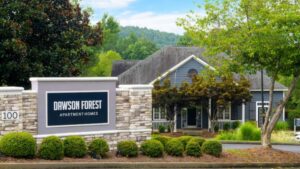Social media and broadcast commercials in the past six months have gravitated to one trope above all: The United States loves essential workers. Or claims to love them, anyway. While a lot of the effusive early gratitude has dissipated as the months crawl by, the country truly can’t get by without essential workers holding down our mail and shipping, healthcare, supply chain, and other critical infrastructure.
And that’s why it’s so incongruous and disturbing to consider how many areas have traditionally resisted increasing the amount of workforce housing. True, it’s not glamorous, but it’s needed wherever there are workers. Covid-19 showed us the unpleasant truth: that many supposedly resilient commercial real estate categories are vulnerable to large-scale disruptions caused by disease and societal unrest. But as long as essential work is needed, there’s also a need to house the workers. And that’s why workforce housing looks like an increasingly smart area for multifamily investors in the long term.
Who needs workforce housing?
According to Brookings Institute, workforce housing programs are most commonly intended for households between 80%-120% of AMI (area median income). But taken literally, the term “workforce housing” simply means housing in a community or neighborhood that’s affordable for those who work in that community. That might mean retail workers, hospitality staff in resort neighborhoods, maintenance and landscape professionals, social workers, or healthcare professionals. It’s not meant for lower income people who qualify for affordable housing; rather, it’s for people who earn in the moderate income tiers.
You’d think most neighborhoods would accommodate this income bracket, but in fact, from Los Angeles to Central Iowa, and from Miami to Boise, these workers cannot actually find housing they can afford near the areas and populations they serve. Many of these areas actively resist approving more workforce units, while others simply tend to approve more luxury units even when the market doesn’t necessarily support it. The workforce housing shortage has become a national issue.
There are a few factors that contribute to certain communities’ aversion to workforce housing.
- Overlap between the term “low-income housing” and the accepted definition of workforce housing. Households earning any income up to 80% of AMI are technically eligible for Low Income Housing Tax Credit (LIHTC) subsidies, and many of those households have adults in the local workforce, so “workforce housing” sometimes has connotations of public-subsidized housing, although the term more accurately encompasses medium-income households.
- Fears that increased housing density created by a surge in medium income/workforce populations will lower the quality of life in neighborhoods where high-rise medium income developments are approved.
- The assumption that workforce housing developers simply buy run-down Class B and C buildings and repurpose them without sufficiently improving them.
- The perceived risk that moving dozens or hundreds of people with lower household income into a neighborhood might lower the property values overall in the neighborhood
- Developers’ concern that allotting more new units for medium income housing reduces the amount of profit they can realize from a multifamily building.
These fears may have some basis in reality, but there are also counterarguments to be made to most of them. For example, if a neighborhood can’t attract enough retail and restaurant workers to adequately staff the local shops and restaurants, then those places will not be able to stay in business. Part of a neighborhood’s desirability is based on its restaurants and retail shops.
With regard to the multifamily developers’ instinct that “higher rent per unit equals a better investment,” when housing costs don’t accommodate the housing needs of people in communities, you get a situation where inventory sits empty while the workforce moves to another neighborhood. This benefits no one in the long term.
And to counter the whole fear of higher density ruining a neighborhood, simply look to gentle density plans such as California opening up ADU (accessory dwelling unit) construction on all single-family homes.
Workforce housing becomes the brightest prospect in multifamily
Workforce housing is a category that’s emerging as fairly pandemic-proof, as well as recession-proof. No doubt, some of the investors and brands to lean into it first were already doing so prior to the pandemic as a fix for problems in their previously planned projects. Practical investors knew, in many housing markets, that the demand for luxury multifamily was waning. And while co-living was touted as the next big thing for a minute, the real-life appetite for it really never materialized, at least not in the way some developers had hoped. When Covid-19 happened, new health regulations around sharing space required a lot of communal concepts, from hybrid apart-hotels to co-living towers, to pivot even faster than they might have been previously planning.
Developers that previously specialized in higher-end multifamily, such as Property Markets Group and Falcone Group, launched new workforce housing divisions in early 2020, while many with an existing presence in the space, such as NRP Group, redoubled their focus. Common, the hip multifamily management firm that had led the co-living charge, launched its own workforce brand Noah in May, mere weeks after the pandemic upended the co-living market.
Throughout the year, a huge wave of investment has been funneled into newly approved projects all over the country, from the Modular Workforce Housing Pilot Program in Indiana to a Pensacola task force to an $87 million loan approved for a workforce housing portfolio in New Jersey. Cities like Atlanta saw a surge in affordable and workforce housing development, although still not enough to meet the demands of a population reeling from this year’s pandemic-driven unemployment spike.
Workforce housing and the future
While the planning, capital raises, and city approvals may be underway, every major housing construction entails a lengthy process. And as long as the U.S. population grows and income inequality goes unaddressed, demand for medium-income housing will continue to outgrow the supply. Workforce housing fits neatly into the Opportunity Zone model of redevelopment, meaning multifamily developers can tap into those funds as well as available tax credits and incentives from local improvement districts. Therefore, workforce housing is one category that seems resilient to whatever new crises and stock market fluctuations the ensuing years might bring.











